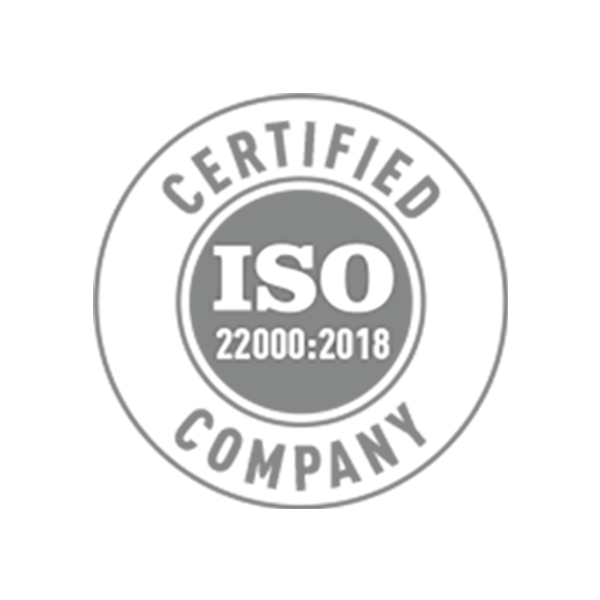Plants are natural raw materials that have been benefiting human health for centuries and are quite often used in alternative medicine methods. Plants are used in different areas by going through different production forms. As a result of some of these production methods, products such as essential oil, carrier oil, infused oil and hydrosols are emerging. The production methods of these products are related to each other, but they are used for other purposes due to their characteristics. Let's take a look if you want:

1) Essential Oil
Essential oils obtained from different parts of plants such as flowers, leaves, fruits, shells and roots are a type of natural oil. The production of essential oils is carried out using different methods due to the fact that they contain volatile compounds that are responsible for the pleasant smells and tastes of plants. Essential oils are obtained from different parts of plants by methods such as steam distillation or cold pressing.
The steam distillation method is realized by heating the plant with water vapor and transporting the essential oil of the plant by this vapor. This vapor is then cooled and condensed, eventually resulting in essential oil. The cold pressing method, on the other hand, is used especially for some fruit peels such as citrus fruits. The shells are first crushed mechanically under high pressure, and then the essential oil is extracted by cold press method.
The most important feature that distinguishes essential oils from other oils is that they are obtained from natural plants and have an intense concentration. The production of essential oils, which require a large amount of plant materials, is therefore slightly more costly than other oils.
It is known that essential oils are distinguished from other oils by their unique smell and taste profiles. There are different types of essential oils that can be obtained from various parts of the plant, and each has a different smell and taste profile. These properties allow them to be widely used in the perfumery, cosmetics and food industries.
As the name suggests, essential oils are highly volatile and can evaporate. These properties allow them to be used effectively in applications such as aroma therapy.
Essential oils are used in many fields such as aromatherapy, massage therapy, cosmetics, cleaning supplies and the food industry. While other oils may be more suitable for certain uses, essential oils can be used for a much wider variety of purposes.
These oils have many benefits. For example, some essential oils reduce stress, stimulate the mind, relieve pain, are good for sinusitis and other respiratory problems. At the same time, many essential oils are also used in skin care.
There are many popular essential oils, such as lavender oil, peppermint oil, tea tree oil, lemon oil and rosemary oil. Lavender oil is known for its calming and relaxing effects, while peppermint oil helps relieve headaches. Tea tree oil is good for skin problems, especially acne and pimples. Lemon oil has cleansing properties and revitalizes the skin. Rosemary oil , on the other hand, revitalizes the mind and is used against hair loss.
Essential oils are quite easy to use. A few drops of essential oil can be mixed with a carrier oil or water and used as a massage oil, bath oil or moisturizer. In addition, a few drops of essential oil can be mixed with water in a diffuser or spray bottle and used to eliminate bad odors in the house or revive the atmosphere.
However, it is necessary to pay attention to high concentrations of essential oils. Essential oils should definitely be diluted before being applied directly to the skin. Also, some essential oils can cause allergic reactions in some people. Therefore, it is important to consult a specialist before using essential oils.

2) Carrier Oils
Carrier oils are natural oils obtained from plant sources, such as essential oils. However, they are not volatile like essential oils and their concentrations are lower. Carrier oils are used for dilution of essential oils and are also used in many cosmetic products.
Carrier oils are natural oils obtained by cold pressing of herbal oils. During this process, the seeds, kernels, fruits or other parts of plants are ground and their extracts are extracted. These extracts are then processed by a special pressing process, at low temperature and under pressure.
The oil obtained as a result of this process naturally become solid and are therefore called "carrier oil". These oils include plants such as pomegranate oil, grapssed oil, hazulnut oil. The production process depends on which part of the plant the oil will be obtained from. For example, almond oil is obtained from almond kernels, olive oil from olives.
Carrier oils are used in many areas. It is also possible to find these oils in many natural products used in cosmetic products. They are used in skin care products, hair care products, soaps, lotions and many other cosmetic products.
Carrier oils are also widely used in massage therapy, aromatherapy and spa treatments. The moisturizing properties of these oils nourish and moisturize the skin. Also muscle , when used as a massage oil, it penetrates the muscles easily and relieves muscle aches.
The use of carrier oils is quite simple. First of all, determine an appropriate amount according to the type and characteristics of the oil you will use. Then, pour the oil into your palm to apply to your skin or hair and spread it by massaging.
Carrier oils can also be used in many different oil mixtures, helping to combine their properties. For this reason, you can create a special oil mixture for yourself by combining different fixed oils according to your needs and wishes decoupled.
However, before using carrier oils, it is important to test any new oil in advance to reduce the risk of allergic reactions. To do this, apply a drop of oil to the inside of your wrist and wait for 24 hours. If you observe any itching, redness or other adverse reactions, avoid using this oil.

3) Infused Oil
Infused oils are aromatic oils used to transfer the natural tastes and aromas of herbs or spices to herbal oils. This process transfers the oil-soluble compounds of plants into the oil, making the oil tasty and aromatic. Infused oils are often used to add flavor and aroma to dishes or salads, they can also be used for some medicinal purposes.
Infused oils are different from regular herbal oils because they have acquired the natural taste and aroma of the plant or spice. Infused oils tend to have a richer and more characteristic taste and aroma profile than regular oils. Depending on the plant or spice used, infused oils may have different flavors.
Infused oils can be used for cooking and frying, as well as for cold dishes such as salad dressings, marinades, mayonnaise and dip sauces. Infused oils may have a shorter shelf life than other oils. Therefore, it is important to store it correctly and keep it fresh. Infused oils should be stored in a dark and cool place.
Infused oils can be easily made at home. It is obtained by adding spices or herbs to oil, heating over low heat and then straining. Infused oils, when stored correctly, can last a long time and retain their flavor. Infused oils are an ideal option to add flavor to dishes and for a healthy diet.
Infused oils are usually natural and safe, but they can also carry some risks. Failure to comply with the correct storage conditions are some of the risks of use. When using infused oils, it is important to apply the correct sterilization techniques and storage conditions and reduce the risks by following the correct usage recommendations.

4) Hydrosols
Hydrolates are by-products formed during plant distillation and are often known as "flower juices". They are produced from parts of plants such as leaves, flowers, fruits, roots or seeds.
Hydrolates are obtained by evaporating water that is decomposed during the production of herbal essential oils. They have the light and water-soluble properties of plant extracts and have a lighter smell and effect than vegetable essential oils.
Hydrolates are widely used in aromatherapy and cosmetic products. They can be used in skin care, hair care and other cosmetic products. Hydrolates are high-quality hydrolates that are produced by the right methods, pure and natural ones.
To produce hydrolate, flowers, leaves, fruits or seeds of plants are distilled with water vapor. In this process, water vapor carries the essential oils and aroma molecules of the plant and condenses when it comes into contact with cold water. Hydrolate is produced from a condensed mixture of steam and water.
The quality of hydrolates depends on the type of plant, growing conditions, distillation method and storage conditions. Hydrolates are pure and natural ones that are produced by the right methods.
Hydrolates are widely used in aromatherapy and cosmetic products. In aromatherapy, they are used to provide a mild effect. They can be used in cosmetic products, skin care, hair care and makeup products.
In skin care, hydrolates help to moisturize, revitalize and relax the skin. Hydrolates are used by choosing according to skin types. For example, chamomile hydrolate is suitable for sensitive skin, while rose hydrolate is suitable for dry skin. Hydrolates can be used as a tonic to the skin or as a moisturizer.
In hair care, hydrolates are used to revitalize, moisturize and give a healthy appearance to the hair. Lavender hydrolate helps to relax the scalp, while mint hydrolate can make the hair look more vibrant.
Hydrolates can also be used in makeup products. Rose hydrolate , used as a makeup stabilizer, can help makeup last longer while calming the skin.
However, it is always important to consult a specialist before using hydrolates. In addition, high-quality and natural hydrolates should be preferred. They do not contain pure hydrolates, preservatives or additives and are of the highest quality and effectiveness.








